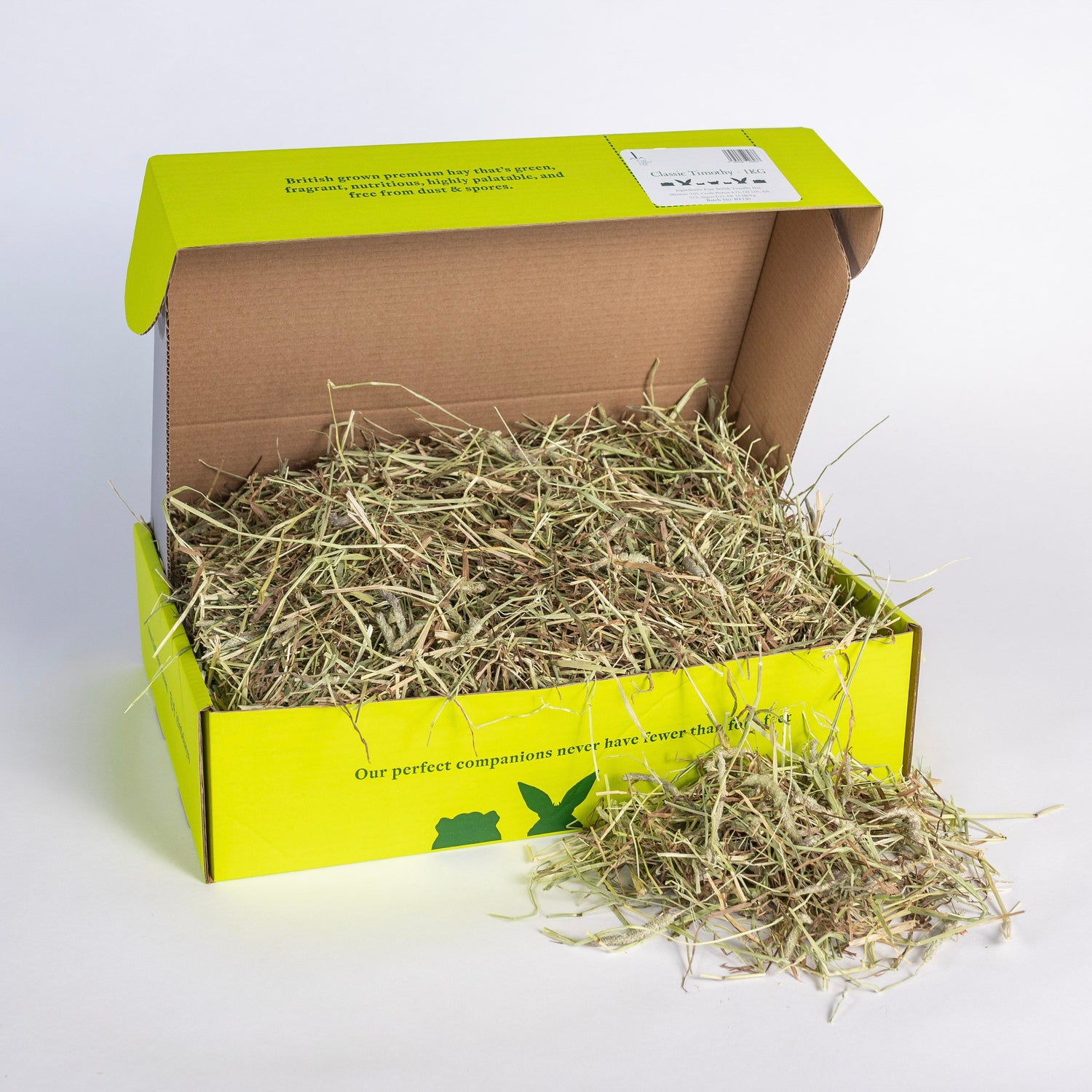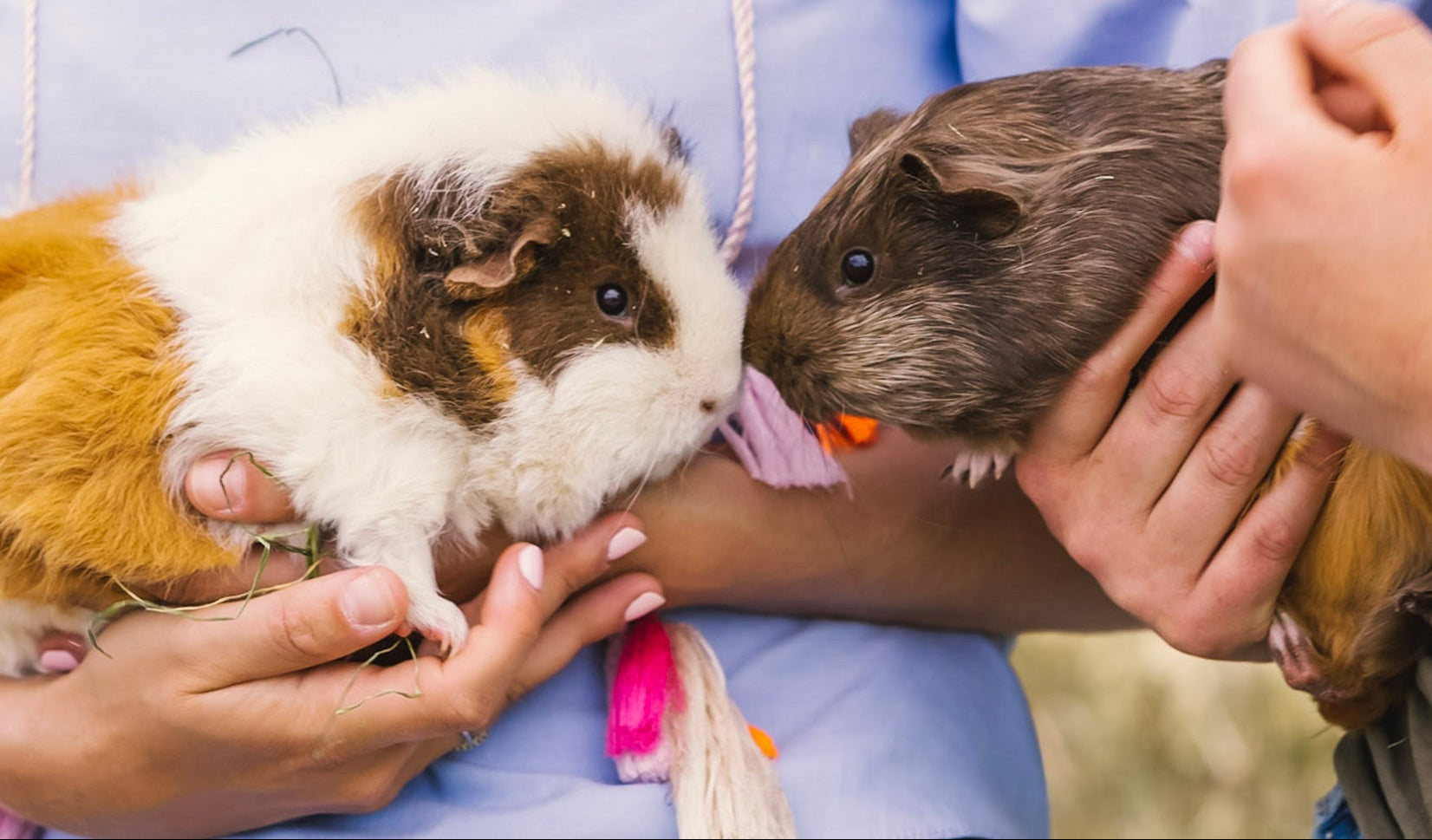We're starting Guinea Pig Awareness Week talking about our favourite all-important subject - Hay! and how to store it for optimum freshness. High-quality hay provides the fibre that guinea pigs need for proper digestion and healthy teeth. But how you store your guinea pig’s hay can significantly impact its freshness, nutritional value, and your pet’s overall well-being.
Keep Hay Dry and Well-Ventilated
The biggest enemy of hay is moisture. When hay gets damp, it becomes prone to mold, which can be dangerous or even deadly to guinea pigs if ingested.
- Location: Store hay in a dry area with good air circulation to prevent moisture buildup. Avoid placing it near windows, bathrooms, or other humid areas.
- Avoiding Condensation: If storing hay in a cool area (like a garage or basement), make sure there's no temperature fluctuation that could lead to condensation. The remaining moisture in the hay will 'sweat' if exposed to heat.
Avoid Direct Sunlight
While sunlight is good for starting the drying process during harvest, prolonged exposure to direct sunlight after storage can degrade its colour and nutrients. Too much sunlight may also cause the hay to become bleached, brittle and lose its freshness.
- Shaded Storage: Store hay in a shaded area to prevent nutrient breakdown and preserve its vibrant green color and aroma.
- Indoor Storage: If you're storing hay indoors, make sure it’s placed away from windows where sunlight might beam directly on it.
- Container: Keeping hay away from UV light (daylight) is important to keep its colour and freshness. Whether you choose to keep your hay in a cardboard box or plastic container is up to you but if you chose plastic make sure it is opaque.
Check for Pests
Hay can sometimes attract pests like insects or rodents, especially if stored in areas like garages or sheds. To avoid this, follow these tips:
- Inspect Regularly: Check your hay regularly for signs of insects or droppings.
- Pest-Proof Storage: If you store hay in an area where pests are a concern, you might consider storing hay in a container that’s pest-resistant.
Buy Hay in Bulk—But Not Too Much
Buying hay in bulk can be economical, but you need to ensure you can store it properly.
- Rotation: Practice “first in, first out” when storing hay. Always use the older hay first to avoid it sitting for too long.
- Consider Smaller Quantities: If you don’t have a lot of storage space, consider buying smaller quantities more frequently to ensure freshness.
Monitor Freshness
Here’s what to look for to ensure it’s still safe and healthy for your guinea pig:
- Colour: Fresh hay should be a vibrant green. If it starts turning brown or losing color, it may be losing its nutritional value.
- Texture: The hay should feel dry and slightly crisp, not brittle or soggy.
- Smell: Fresh hay has a sweet, grassy scent. If it starts smelling musty or moldy, it’s time to replace it.
Use By Date
Because hay is a natural product that doesn’t need preservatives or additions to keep it fresh it does not expire like other food types do. When stored in the proper conditions, hay will retain its nutritional values for a long time. We have previously stored hay in our barns for up to 2 years which has still been clean, green and delicious when reaching our customers.













